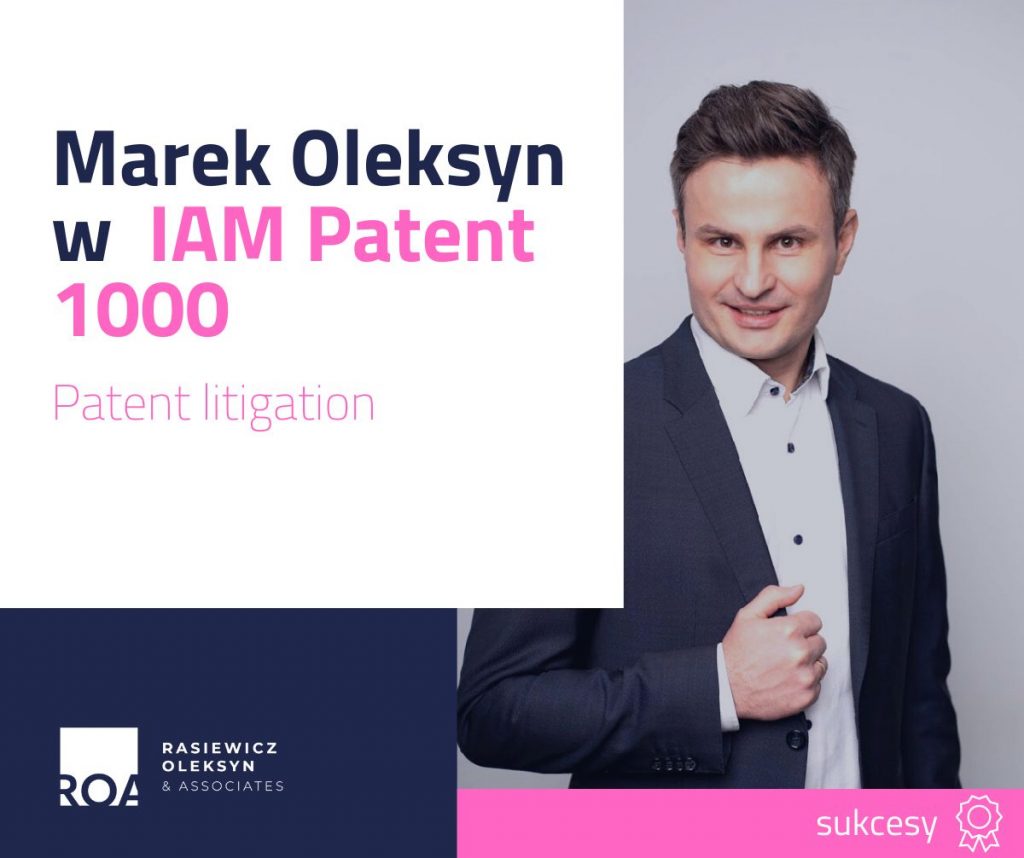Who’s Who Legal 2024 – Lexology recognized our Partner Justyna Rasiewicz as one of the best practitioners in the categories IP – Patents, IP – Trademarks and Life Sciences – Patent Litigation.
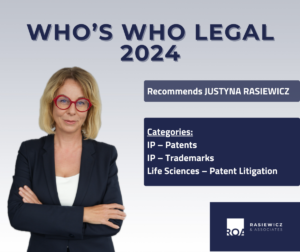

Who’s Who Legal 2024 – Lexology recognized our Partner Justyna Rasiewicz as one of the best practitioners in the categories IP – Patents, IP – Trademarks and Life Sciences – Patent Litigation.

We are excited to inform that another year in a row our partner Justyna Rasiewicz has been awarded in the Trade mark star and Patent star 2024 categories in the IP Stars Managing Intellectual Property ranking. The ROA Rasiewicz & Associates law firm was also recognised by earning a Tier 3.
We would like to thank our customers and business partners for their trust!

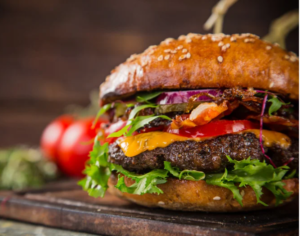
The Irish fast food chain Supermac’s has won a David v. Goliath legal battle against McDonald’s in a case concerning the BIG MAC trademark. The General Court’s decision issued on June 5 means that the US-based fast food giant no longer holds the BIG MAC trademark for chicken burgers and services rendered or associated with operating and franchising restaurants.
The General Courts’s ruling was part of a broader legal battle between Supermac’s and McDonald’s. The legal dispute began in 2015 when Supermac’s attempted to register its name as a trademark for restaurant services in the EU. McDonald’s opposed the application, arguing that the name was too similar to its BIG MAC burgers and would confuse customers. In its defense, the Supermac’s filed an application for a revocation of the BIG MAC trademark to the EUIPO due to non-use. It argued that the trademark had not been put to genuine use in the EU in connection with all the goods and services for which it was registered.
The Cancellation Division of the EUIPO revoked the trademark in its entirety. It found that McDonald’s had failed to prove genuine use of the BIG MAC trademark, as most of the evidence provided by McDonald’s concerned only the marketing and packaging of the BIG MAC sandwich (there was no reliable evidence of sales and turnover figures and that BIG MAC was actually offered for sale).
McDonald’s appealed the decision and submitted a large amount of additional evidence, including consumer surveys (demonstrating knowledge of the term BIG MAC), receipts and data from cash registers (showing sales figures), screenshots of TV commercials, and photographs of out-door advertisements with affidavits from advertising agencies (to prove circulation of advertising materials), screenshots of videos published by third parties on YouTube, Google Analytics reports (proving number of viewers of McDonald’s websites), and financial audit reports (demonstrating BIG MAC units sold).
After analyzing new evidence, the EUIPO Board of Appeal partially upheld McDonald’s appeal. It confirmed the protection of the BIG MAC trademark in particular for meat sandwiches, chicken sandwiches, services rendered or associated with operating restaurants and other establishments or facilities engaged in providing food and drink prepared for consumption and drive-through facilities, and preparation of carry-out foods.
Supermac’s filed a complaint to the General Court, which further limited the protection of the BIG MAC trademark in such a way that the trademark was left to be registered almost solely for foods prepared from meat and meat sandwiches.
Authors’ comments
There are a few key takeaways from the BIG MAC case for trademark owners. Firstly, EU trademark law relies on a “use it or lose it” system. No matter how reputable your trademark is and how big your company is, if you do not use your trademark for the goods/services for which it is registered, you will not be able to keep your trademark. Even large and well-known companies should keep detailed records of the products they put on the market on a daily basis and keep sales statistics broken down by specific products to quickly and easily prove the product’s presence on the market.
Secondly, an overly broad trademark registration makes no sense in the long run. For a while, such a trademark may serve as a deterrent in the market, but eventually, someone will take action to have it revoked.
Thirdly, in a revocation action, the evidence of use must show the place, time, extent, and nature of the use of the mark. With regard to the extent of use, it is important to show the commercial volume of the overall use, as well as the length of time during which the mark has been used and the frequency of use.
In terms of evidence provided, you should avoid relying solely on affidavits signed by your internal representatives or employees. They are merely indicative and need to be corroborated by other evidence. You should also provide advertising materials but they should be accompanied by evidence of their distribution. Sales and turnover evidence is essential. Use of your trademark may also be demonstrated by: consumer surveys, Google Analytics reports showing the number of visitors to a website where your trademark was displayed, and financial audit reports showing the number of units sold of a product bearing your trademark. Last but not least, the evidence must show use directly, without the need to guess, as it will then not be taken into account.
Case no.: T-58/23
The article was first published in The Trademark Lawyer Magazine: https://trademarklawyermagazine.com/mcdonalds-loses-big-mac-for-subsequent-goods-and-services/
We are very pleased to announce that our Trademark & Patent Attorney – Monika Wieczorkowska has successfully completed the EUIPO Trademark and Design Education Programme for Practitioners 2023-2024.
Congratulations on this well-deserved accomplishment!

We are extremely proud to share that news with you: Justyna Rasiewicz, Partner in ROA Rasiewicz & Associates, was included in the IAM Global Leaders 2022 list for Poland! 👏👏👏

We are extremely excited and look forward to the premiere of the book co-authored by our Partner Justyna Rasiewicz. “Methodology of attorney’s work in civil cases in the field of intellectual property law” published by Wolters Kluwer Polska is the first ever such publication in Poland that allows discovering various aspects of the IP litigation.
Book release date is 25.10.2021. Link to pre-order: here.

Available now “Civil proceedings in intellectual property cases. Commentary for attorneys and judges”. Co-author of the commentary is our colleague, advocate Sylwia Stepaniuk. We are very proud and encourage you to buy it! 😊
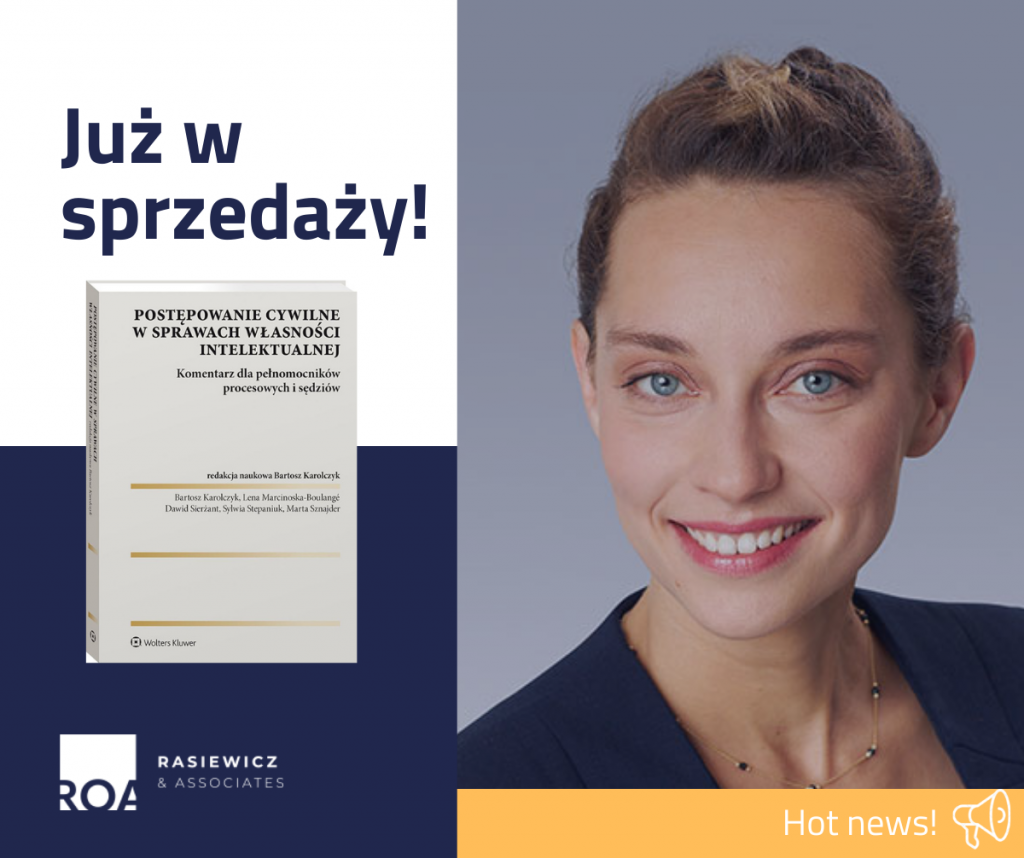
We are proud to announce that Justyna Rasiewicz was nominated by her peers as one of the world’s leading practitioners in Who’s Who Legal: IP 2021 in two categories: Patents and Trademark!
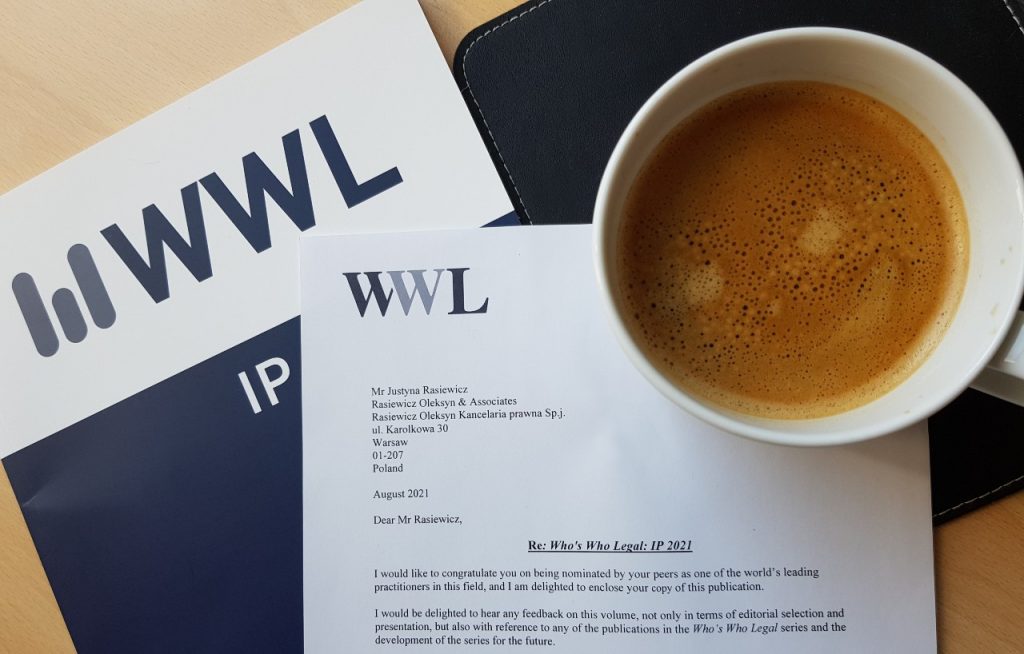
Fashion sector is one of the industries that has been hit particularly hard by the coronavirus pandemic sweeping through the world.
The problems that the fashion market is currently struggling with and will face in the near future include, among others, from the specifics of the industry, in particular its multidimensional internal and external links. By hitting the fashion sector, the pandemic has hit shopping malls, advertising and marketing, logistics and transport at the same time, and its painful effects affect both production and sales. Many negative consequences of this situation will become apparent in the near future.
Agnieszka Oleksyn – Wajda from ROA Rasiewicz Oleksyn & Associates (Company in Crisis – Industry Guide) writes about the production paralysis, closed stores, the situation of employees in the fashion sector, the increase in e-commerce sales, and the polarization of business for Rzeczpospolita.
The publication also presents conclusions regarding the directions in which entrepreneurs from the fashion sector should follow.
In addition to the omnichannel sales strategy, the development of new technologies, the trend that gives the direction to the development of the fashion industry, the publication discusses sustainable development and the transformation towards a circular economy, taking into account the EU strategy in this area and consumer expectations.

Patent enforcement matters form substantial part of our ROA Rasiewicz Oleksyn & Associates practice. We are all the more pleased that our partner Marek Oleksyn was again recommended in the leading IAM Patent 1000 ranking in patent litigation!
